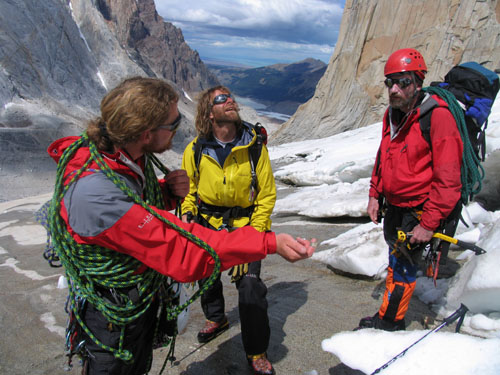
How to build a shelter? Building a shelter is not a task as difficult as it sounds. These are some small tips to consider before building the shelter:
– The refugees must be mainly small. The smaller, faster and heats the atmosphere unless the body loses heat.
– The entry must be on the side opposite the wind.
– Never sleep in direct contact with the floor: use some insulating material.
To build this shelter, the ideal is a mound of snow on a slight slope. The first will define which side will open the entrance. Then they must dig deeper and in height, making the flat floor, avoiding any inclination. It is important that the gap is not as deep to get out easily in case of any trouble.
Such shelters are heated due to heat from the body, but you can also use a candle to help raise the ambient temperature. It should always leave a gap for air exchange.
Hydration, to melt ice. The most effective ways to hydrate with are basically the melting ice. For a handful of ice melt is not a recipe, you can choose between any of these options: using body heat, place in a bottle about after the fire, sun exposure or chewed directly only if you have heat, which helps a lot to lower the temperature.
Solar radiation. In any place with snow, solar radiation is so strong that it can cause temporary blindness and photophobia to ulcers and even strokes. This is because snow absorbs 10% of solar radiation and returns a 90% upward, having a total of 190% of solar radiation in the atmosphere (100% above and below 90%).

There is a makeshift way to prevent sun damage of the eyes: You should take a thin strip of fabric and make 2 cuts kids to eye level, then wear it as a mask. Another way to avoid exposure is to use closed glasses which cover the sides to protect the eyes also sideways. These must be at least an SPF of No. 3.
One very important thing to remember is not to be fooled by clouds. These can filter the light, but do not stop UV rays are invisible to our eyes, which are what really affect vision.
Avalanches. If you are a victim of an avalanche, you should make swimming movements to stay on the surface. Once you feel you reach the end, creates an air chamber around your head, putting his hands before his face. This will give you some extra airtime. Try to lift an arm to see if you are near the surface, if you do, leave it outside so that rescuers can see you.
Save stress and violent movements as this will make you consume more air.

Medical Affairs in the extreme cold and altitude. Many survival situations in both polar regions and high mountain require only minimal medical knowledge to solve them. Here are some examples:
Freezing. The parts are exposed to freezing toes, hands, nose and ears. This can happen from one moment to another and involves the frozen limb loss by causing necrosis.

How to prevent freezing?
– Regularly check the status of the extremities.
– Try to always keep these parts well covered and warm.
– Drink and eat well.
– Do not use gloves or stockings that can block the circulation in hands or feet.
– If skin is already cold and insensitive, you must apply circular movements to stimulate circulation in the area.
– Introduce the affected limb in the shelter, in contact with the body to keep her warm.
– If it’s one foot, do so under the shelter of a third.
How to save a limb frozen?
– Enter the member frozen in warm water not hot in periods of 20 minutes.
– Avoid being near strong heat sources like fire.
– Take a pain pill.
– Do not rub against the skin frozen
Hypothermia Hypothermia is the lowering of the temperature of the trunk below the 35.5 º. This can occur by falling on ice water, or under the influence of a sum of conditions such as rain with strong winds on the mountain if it gets wet clothes.
Curing the symptom:
– Do not massage the area.
– Drinking and eating in abundance.
– Exit the unfavorable environment and seek refuge for warming the body.
– The warming should be gradual, not abrupt.
– Use body heat if you’re with another person such as hugging.
Acute Mountain Sickness (AMS): The Acute mountain sickness is partly genetic, but a good workout can help prevent it. This symptom is manifested by headaches, dizziness, nausea, decreased level of consciousness and vomiting. Turning then to cause pulmonary edema and cerebral edema ultimately causing death.
This is due to poor adaptation that has the most people on high, because the higher you are, the dissolved oxygen is more or less compressed, which makes it difficult to incorporate.
Solution:
While there are some methods such as chewing coca leaves or administered drugs such as «steroid dexamethasone (decadron)» the only cure is to descend that never fails to be out of danger.

Survival at high altitudes – Part I
Good luck!
Leave a Reply
You must be logged in to post a comment.
Recent Comments